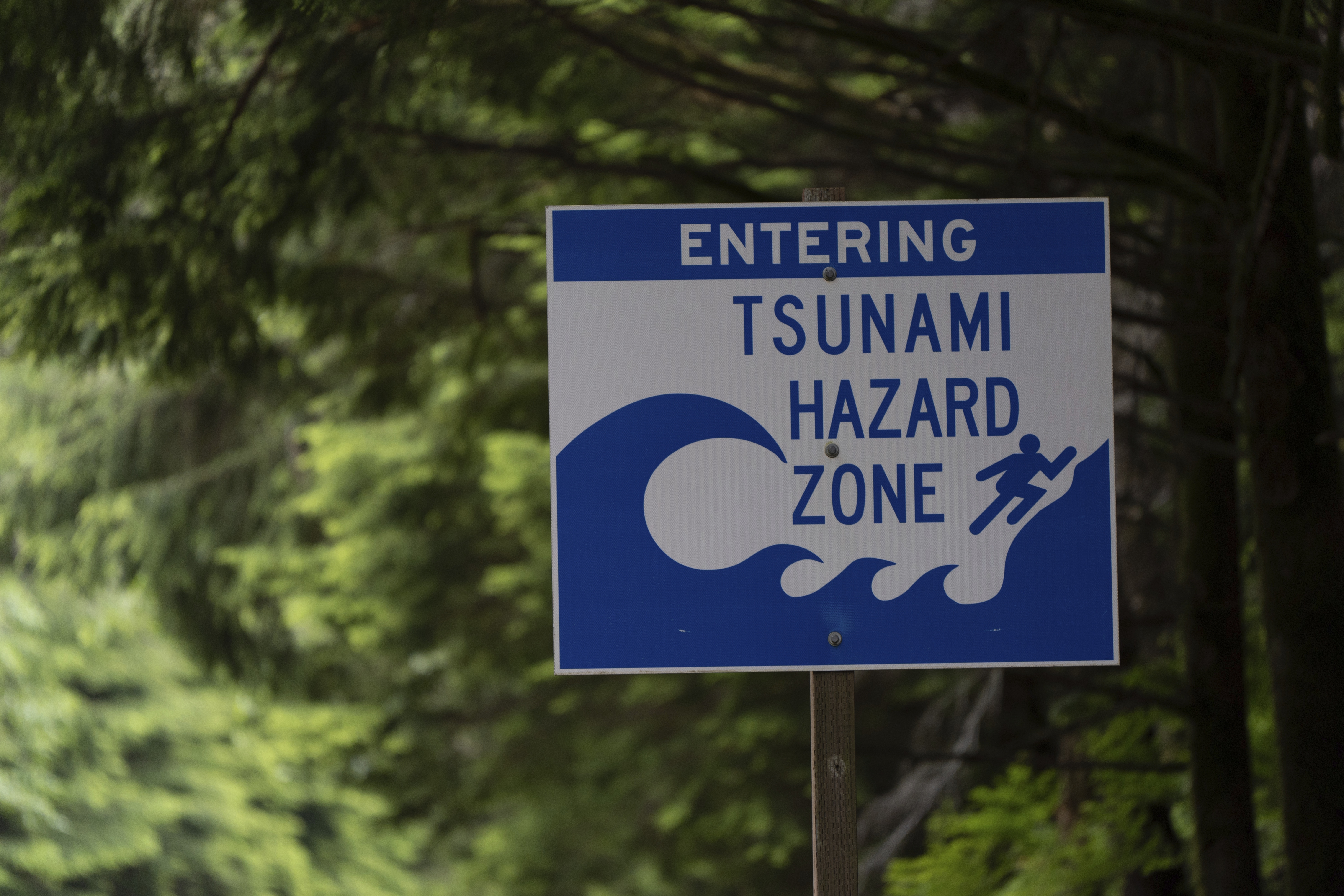Anyone in an area under a tsunami warning should immediately move to higher ground or move inland.

FILE - A sign warning drivers that they are entering a tsunami hazard zone is displayed along U.S. Route 101, also known as the Oregon Coast Highway, north of Lincoln City, Ore., on June 14, 2024.
Jenny Kane
Hydrologist Andy Bryant with the National Weather Service says there are a lot of variables for when, why and how a tsunami warning is issued, and how long before it hits land. But once that warning is place: “Take action. Now!”
“We don’t know the details of the impact, so it’s better to be safe,” he said. It can take time to get out of the danger zone, so “act quickly and get to higher ground immediately.”
A tsunami is a series of massive and fast-moving ocean waves that can cause sudden flooding and widespread destruction. Most tsunamis are caused by earthquakes.
What is a #tsunami, what causes them, and where do they occur?
— NOAA Research (@NOAAResearch) December 6, 2024
Learn about the science behind tsunamis and the research @NOAA does to provide accurate inundation forecasts in real-time before flooding from a tsunami reaches threatened coastlines.https://t.co/KtnlXygn98 pic.twitter.com/o7orndwmbu
The American Red Cross warns that there are also natural signs of an approaching or potential tsunami — and they may be the “first, best, or only warning that a tsunami is on its way."
Those signs can include an earthquake or a loud roar coming from the ocean. They can also include abnormal ocean behavior, like a wall of water approaching or a retreat of the water so dramatic that the ocean floor is visible.
Any of those signs could mean a tsunami is coming. Anyone who sees one should immediately move inland or to higher ground, and should not wait for an official alert.
Related: Tsunami warning expires along southern Oregon, northern California coast
The Red Cross also warns that anyone near the coast who feels shaking from an earthquake should immediately drop, cover and hold on until the shaking stops, and then move to higher ground.
Anyone who has evacuated should stay where they are until officials say it is safe to move again.
There are four types of tsunami alerts issued by the National Oceanic and Atmospheric Administration’s Tsunami Warning Centers.
- Tsunami information statement: Monitor local emergency information. An earthquake has occurred, but there is no threat, or it was very far away, and the threat has not been determined.
- Tsunami watch: Be aware and be prepared to take action if necessary. A distant earthquake has occurred. A tsunami is possible.
- Tsunami advisory: Take Action. Stay out of the water and away from beaches and waterways. Follow instructions from local officials. A tsunami with dangerous currents or waves is expected or occurring.
- Tsunami Warning: DANGER! Take immediate action and move to higher ground or inland. A tsunami that may cause widespread flooding is expected or occurring. Dangerous coastal flooding and powerful currents are possible and may continue for several hours or days after initial arrival.
To stay safe and prepared ahead of a tsunami or other natural disaster, the Oregon Office of Emergency Management recommends signing up for emergency alerts, understanding local evacuation routes and creating emergency plans.
OEM also encourages people to “Be 2 Weeks Ready” for any emergency. That includes having a plan ready and keeping enough supplies on hand for the entire household to survive for at least two weeks following a natural disaster.
